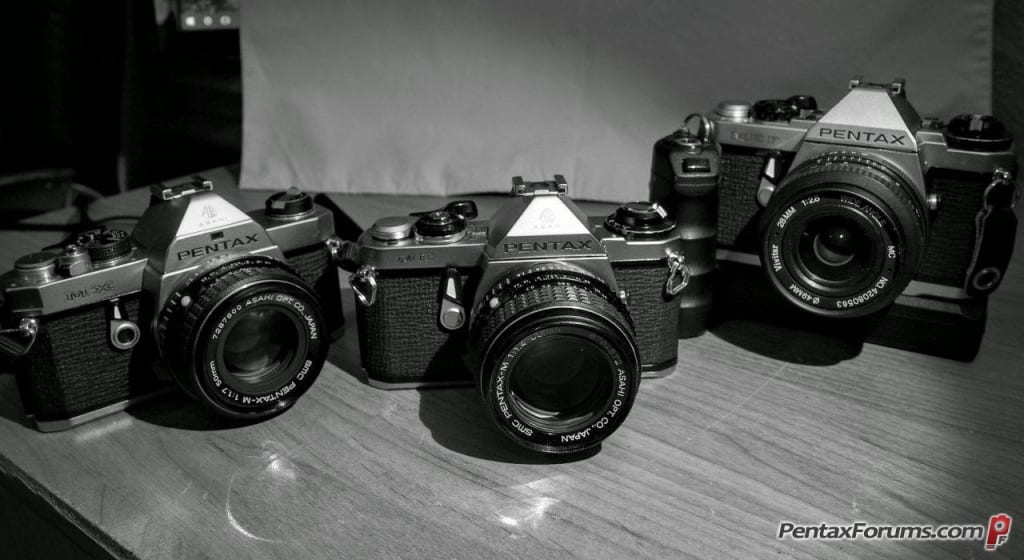Black and White Photography Tips from an Amateur
Typically, professionals are supposed to give you tips on B&W Film Photography. But what if an amateur gave you a few tips?

From exposure settings to lighting, there's always tips that a professional photographer would give us. Most of the time, I consider myself an amateur, although my instructors and classmates (along with family members and friends) have stated that my photographs are high-quality and professional. Before we continue, let me tell you my age: I am 20 years of age, turning 21 this August of 2018. I don't consider myself a professional not because of my age, but because of my experience.
I have a little bit of experience in photography, from which I will share with you a few tips on today. Not everyone is born a photographer, but I believe we all have that desire to become one if we wanted to. Not everyone is born an artist, or a mathematician. Not everyone has that talent, but we as humans can train our bodies and minds to become whatever we need it to become (no, we can't become bulletproof).
Back to my point: you came across this article for tips, right? Well, here they are:
Exposure Settings, Exposure Settings, Exposure Settings!
Exposure settings are vital for your Black and White film to appear when you develop it. I usually stay at 0.0 exposure, because if I go at +1.0/2.0, or -1.0/2.0, my film negatives will be overexposed/underexposed. If my camera's sensor senses a +0.5, +0.7, -0.5, or a -0.7, there is a slight chance that my film will be over or underexposed. Then again, I use the ILFORD Delta Professional B&W Film on ISO Speed 100 with a 36 exposure (in this case, pictures).
Use a tripod for lower shutter speeds.
I speak from personal experience: Always use a tripod for lower shutter speeds! Say for example you're going to take a picture of a rosca (it's a Mexican tradition where you cut a sweet bread, the rosca, and get a baby inside) and there is low lighting. I am actually using this as an example because I did take a picture of one, without my tripod. The f-stop was at 5.6, at a 1 second shutter speed. Use a tripod when available, or do not take the picture at all. Also, if you're snapping away at shutter speeds like 1/32, you might want to use a tripod. Your camera does produce shake.
Filters can be your "frenemy."
We aren't talking about filters on the camera. We're talking about darkroom filters. That's right, this is a film photography article! I did make this clear on the first tip. Anyway, back to filters. You don't need filters for EVERY. SINGLE. PHOTO. Although some people love filters, I personally use them as a last resort (basically, when my image is too gray). Filters are meant to add contrast to your picture, not make it look like an award-winning photograph. Although the latter would be nice, too much contrast is possible with your photo. If it's slightly gray, use a 2 or 2 1/2 filter. If the photo looks a too gray, then a 3 will do. Remember, not all of your photos will look like they belong in a gallery. Appreciate them as they are. And don't use filters to make your pictures look "professional." Use them sparingly, and when necessary.
Always take notes of the pictures you've shot.
Although I need to do this and don't — this is a tip that seems possibly redundant but necessary to mention. Whatever photo you take, make sure you jot down the details. You're not going to remember the f-stop, shutter speed, time and weather conditions of every single photo. I don't, trust me. This tip is the one that most people (including myself) seem to forget, as it is the only one that helps photographers improve their craft. So buy that notebook, and get to jotting down data that will help you in the future.
Last but not least, when using an enlarger always remember you will need test strips!
You will also need to change the f-stop on the enlarger occasionally until your photo comes out beautifully.
Enlargers can be confusing at first, but once you get the hang of them, they are not a problem to use. But, when you use these machines, it's always a good idea to change the f-stop occasionally. If the image is too dark, and you are at a 5.6 f-stop on the enlarger, go 1 stop darker (f-8). If the image is too light at the same stop, go to f-4. If you are using filters, you always want to go at a full stop brighter if you want to keep your time, or double it if you're at the brightest f-stop. For example, say it takes 15 seconds for your light-sensitive paper to capture the image at an f-4 stop (because your image is very vibrant and too gray, so you decide to use a contrast filter 3). Go one stop brighter, f-2.8, and keep the time when you have the filter on.
By following these tips, you will definitely have a better time photographing life's beautiful moments.
About the Creator
Katherin Partida
I love photography and art! I also love to help whenever I can! I also write about whatever comes to mind.






Comments
There are no comments for this story
Be the first to respond and start the conversation.